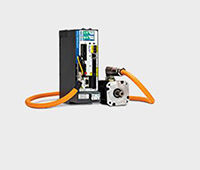Amid the dazzling designs and impressive powertrains being unveiled at this year’s 2014 North American International Auto Show (NAIAS) in Detroit are some often invisible but always essential sealing components that keep today’s new vehicles on the road and more fuel efficient than ever before.
Freudenberg-NOK Sealing Technologies’ Low Emission Sealing Solution (LESS) products are being used in a variety of new vehicles to address industry challenges such as better fuel economy, start-stop capabilities, direct fuel injection, use of lighter materials and more robust components that stand up to extended warranty requirements. In fact, Freudenberg-NOK products can be found in virtually every vehicle on the road today.

Freudenberg-NOK seals are being used by virtually every auto manufacturer. They are helping to power new vehicles that General Motors, Honda, Chrysler and BMW, among other manufacturers, are introducing at the Detroit show this year.
“The company’s ‘Often Invisible, Always Essential’ brand campaign captures the essence of Freudenberg-NOK’s LESS product portfolio, especially in an industry where demands for better fuel economy, lower emissions, and friction reduction continue to grow unabated,” said Torsten Maschke, president, Automotive Sales and Marketing,
“We have launched our LESS initiative to address prevalent industry trends,” Maschke pointed out. “For starters, there are products like dynamic seals that we can use to directly reduce friction. And we have much more to offer – products that are making emission reductions and better fuel economy possible in the first place. Whether we are talking about radical new products or traditional applications, we are creating added value for our customers in every case.”
Freudenberg-NOK’s LESS products offer tremendous potential in addressing today’s key industry challenges. For example:
The company’s gas-lubricated mechanical face seal, Levitex™, under development and due for introduction in 2017, is nearly friction-free. A cushion of air is created between the slide ring and a counter ring, leading to a 90 percent reduction in friction compared to a conventional crankshaft seal. This cuts CO2 emissions during driving between 0.5 g and 1.0 g of CO2 per kilometer. A 1.0 g reduction in CO2 emissions is the equivalent of approximately 0.2 mpg savings in gas for a vehicle rated at a 33 mpg. The seal also facilitates longer operation by reducing wear.
The company’s Energy Saving Seal (ESS™), for engine crankshafts and camshafts, combines the robust sealing interface of a conventional polytetrafluoroethylene (PTFE) collar with the friction-reducing properties of an elastomer seal. Friction is reduced by 40 percent compared with a conventional PTFE lip.
The CASCO™ cassette-type seal up to 70 percent greater energy savings compared with conventional lip designs used in other transmission, driveline and diesel engine segment seals. The CASCO cassette-type seal generates a much lower friction due to the advanced design of its “axial” sealing lip. CASCO seals performed and successfully passed several bench tests reaching over 1 million miles. Customer field tests confirmed this performance.
The company can offer a multi-pole encoder that can be combined with a radial shaft seal, creating one component. The elastomer layer, which can be magnetized and encoded with north and south poles, provides the control module with precise information on the rotational speed and the position of the shaft – an important criterion for start-stop systems. This makes it possible to minimize installation space, weight and process costs.
The company is also working on many innovations in the area of lightweight construction. For example, hydraulic accumulators are saving energy and weight in transmissions. Automatic start-stop systems require high volume flow for short periods. A hydraulic accumulator with a lightweight design covers peak pressure in the short term. This means the hydraulic system can be designed solely for average energy needs, and the transmission can be made smaller and lighter.
Freudenberg has been able to build its expertise in the area of lightweight construction through its joint venture with the Schneegans Group. This partnership has allowed the company to leverage Schneegans’ expertise in two- or multi-component injection molding. Examples of this technology include the 3D-form full-plastic tubes for oil dip sticks and oil filler necks. These components allow the tight space in the engine compartment to be optimally used. In the case of 2K plastic pump housings, seals can be injected directly for oil and water circuits for added functional security. The same is true for housings with seals integrated into their covers with a 2K design; they absorb dynamic stresses and can provide tolerance compensation even during significant temperature swings.
Freudenberg-NOK Sealing Technologies
www.fnst.com
Filed Under: Seals • O rings, MOTION CONTROL, Seals





Tell Us What You Think!